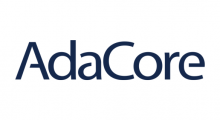Evolution of Standards for High-Integrity Software in Railways
Roger Short
Chair of Subcommittee GEL/9/1 [Railway Signalling], BSI/RSSB
Railway signalling systems making use of high-integrity software began to be brought into use in a number of countries in the mid-1980s, but it was not until 2001 that the first version of the European Standard EN50128, Software for railway control and protection systems, was published. A revised version was published in 2011, and this, with minor corrections and amendments in 2014 and 2020, has remained the industry standard almost up to the present date. A similar standard applicable to software for rolling stock applications (EN 50657) was published in 2017.
In 2023 a standard which revised and merged the signalling and rolling stock standard was published with a new number and title, EN50716, Railway Applications - Requirements for software development.
Following a brief outline of the evolution of these standards, this presentation will focus on the changes and new material which have been incorporated into EN50716 and explain their impact on the unchanged material. A significant amount of additional guidance on lifecycle models has been provided, especially concerning iterative lifecycles. Another major addition is the provision of an annex outlining the potential benefits of modelling during software development and providing guidance on the application of modelling in compliance with the requirements of the standard.
The presentation will conclude with some speculation on the possible further evolution of the standard.
About Roger Short
From leaving school in 1963, Roger Short spent 27 years at British Rail in the Signal Engineering Department, becoming Signalling Development Engineer, BR Headquarters, responsible for type approval of railway signalling equipment. Led the safety assurance of the Solid State Interlocking (SSI) system, the first application of a safety-critical programmable electronic signalling system on Britsh Rail.
Subsequently spent 10 years with HM Railway Inspectorate, five as Assistant Chief Inspector of Railways, then 11 years at Atkins as a Chief Engineer working in the area of safety assurance.
Now chairman of the UK National Committee for standards for Communication, Signalling and Processing Systems and a member of several CENELEC working groups responsible for various European standards for safety-critical electronic systems and software for railway applications.




